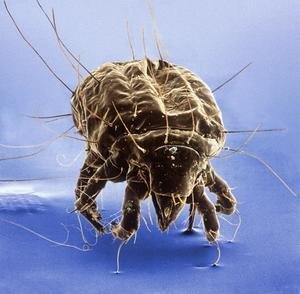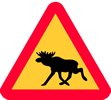 On the first day of Christmas,
On the first day of Christmas,my true love sent to me
A partridge in a pear tree.
(The word “fart” is derived from the Greek for partridge [Perdix perdix] “perdix”, partridges make a whirring noise when they fly)
 On the second day of Christmas,
On the second day of Christmas,my true love sent to me
Two turtle doves,
And a partridge in a pear tree.
(Not called a turtle dove [Streptopelia turtur] because it has a shell, it doesn’t; the name comes from the soft cooing “turr turr” call)
On the third day of Christmas,

my true love sent to me
Three French hens,
Two turtle doves,
And a partridge in a pear tree.
(Alsace, Aquitaine, maran, combattant du nord, coucou du Rennes, crevecouer, pictave, Lyonnaise… these are some French hens [Gallus gallus domesticus])
On the fourth day of Christmas,

my true love sent to me
Four colly birds,
Three French hens,
Two turtle doves,
And a partridge in a pear tree.
(Not “calling birds”, my friends, but “colly birds”, colly=coaly=black, yes, Blackbirds [Turdus merula], that what the true love gives 36 of in this song, enough for a pie and a half)
 On the fifth day of Christmas,
On the fifth day of Christmas,my true love sent to me
Five golden beetles,
Four colly birds,
Three French hens,
Two turtle doves,
And a partridge in a pear tree.
(Gold beetles [Plusiotus resplendens] are very gold but not ringshaped at all…. Clutching at straws my friends, clutching at straws)
On the sixth day of Christmas,
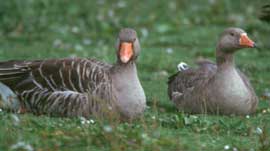
my true love sent to me
Six geese a-laying,
Five golden beetles,
Four colly birds,
Three French hens,
Two turtle doves,
And a partridge in a pear tree.
(Domestic geese are derived from greylag geese [Anser anser], these geese frequently form same-sex pairs that engage in courtship behaviour and territorial disputes, up to 10% of pairs, these couples may act as guardians of the flock—gaylag geese more like)
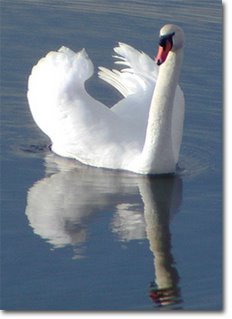 On the seventh day of Christmas,
On the seventh day of Christmas,my true love sent to me
Seven swans a-swimming,
Six geese a-laying,
Five golden beetles,
Four colly birds,
Three French hens,
Two turtle doves,
And a partridge in a pear tree.
(Since the 12th century, all the mute swans [Cygnus olor] on the Thames have been owned by the British Monarch (these swans have no rings), except, that is, for those owned by the Dyers’ company (ringed on one leg) Vintners’ company (ringed on both legs))
On the eighth day of Christmas,
my true love sent to me
Eight maids a-milking,
Seven swans a-swimming,
Six geese a-laying,
Five golden beetles,
Four colly birds,
Three French hens,
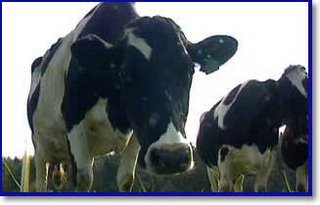
Two turtle doves,
And a partridge in a pear tree.
(The most common dairy cow [Bos taurus] is the Holstein-Friesian; 9 million of the USA’s 10 million dairy herd are this breed. A single cow can produce 10 000 litres of milk a year in the USA where hormones are used to up milk production, but only 7000 to 8000 litres in the UK. Artificial insemination is the norm for dairy herds, meaning a few bulls can father entire generations of calves – the most prolific (200 000 calves) producer of bull-juice of all time was called… Starbuck)
 On the ninth day of Christmas,
On the ninth day of Christmas,my true love sent to me
Nine lady beetles,
Eight maids a-milking,
Seven swans a-swimming,
Six geese a-laying,
Five golden beetles,
Four colly birds,
Three French hens,
Two turtle doves,
And a partridge in a pear tree.
(The theory goes that ladybirds are so-called after Our Blessed Lady, the mother of Jesus for their ability to save crops from pests!)
On the tenth day of Christmas,

my true love sent to me
Ten Lord Howe woodhens,
Nine lady beetles,
Eight maids a-milking,
Seven swans a-swimming,
Six geese a-laying,
Five golden beetles,
Four colly birds,
Three French hens,
Two turtle doves,
And a partridge in a pear tree.
(The restoration of the population of the Lord Howe woodhen [Gallirallus sylvestris] from 20 individuals in 1969 to 200 birds now by captive breeding and elimination of pigs from the small Island off the east coast of Australia is seen as a model for successful conservation)

On the eleventh day of Christmas,
my true love sent to me Eleven pipefish piping,
Ten Lord Howe woodhens,
Nine lady beetles,
Eight maids a-milking,
Seven swans a-swimming,
Six geese a-laying,
Five golden beetles,
Four colly birds,
Three French hens,
Two turtle doves,
And a partridge in a pear tree.
(In pipefish, such as the ornate ghost pipefish [Solenostomus paradoxus], as in their relatives seahorses, the male assumes the main parenting role, wither carrying the eggs around on specially adapted skin or in a pouch.)
On the twelfth day of Christmas,
my true love sent to me

Twelve drummers drumming,
Eleven pipefish piping,
Ten Lord Howe woodhends,
Nine lady beetles
Eight maids a-milking,
Seven swans a-swimming,
Six geese a-laying,
Five golden beetles,
Four colly birds,
Three French hens,
Two turtle doves,
And a partridge in a pear tree!
(Animal was the drummer for the Muppet band, Dr Teeth and the Electric Mayhem)
Partridge
Number of legs: 2
Celebrity a-like: The Partridge family 26
Top speed: 50 mph
Tenacity: 2
Likelihood of hurting James Blunt: 64%*
Aesthetically pleasing: 6
Violence: 2
Can be kept on a roof terrace: 24
Religiousity: 32
Special skill: Edibility 76
*James Blunt (né Blount), shooting accident?
Turtle doves
Number of legs: 2
Celebrity a-like: Teenage mutant ninja turtles 12
Top speed: 40 mph
Tenacity: 2
Likelihood of hurting James Blunt: 12%*
Aesthetically pleasing: 7
Violence: 2
Can be kept on a roof terrace: 24
Religiousity: 24
Special skill: Cooing 62
*There is always hope
French hen
Number of legs: 2
Celebrity a-like: Foghorn Leghorn 76
Top speed: 20 mph
Tenacity: 2
Likelihood of hurting James Blunt: 22%*
Aesthetically pleasing: 4
Violence: 2
Can be kept on a roof terrace: 31
Religiousity: 45
Special skill: Edibility 92
*Salmonella
Colly birds
Number of legs: 2
Celebrity a-like: Cilla Black 3
Top speed: 25 mph
Tenacity: 2
Likelihood of hurting James Blunt: 3%
Aesthetically pleasing: 6
Violence: 2
Can be kept on a roof terrace: 2 (not pets, but they might visit!)
Religiousity: 21
Special skill: Birdsong 75
Golden beetle
Number of legs: 6
Celebrity a-like: Goldfrapp (Allison) 1
Top speed: 4 mph
Tenacity: 3
Likelihood of hurting James Blunt: 2%
Aesthetically pleasing: 7
Violence: 1
Can be kept on a roof terrace: 23
Religiousity: 47
Special skill: Being a golden 78
Greylag goose
Number of legs: 2
Celebrity a-like: Anthony Edwards 21
Top speed: 50 mph
Tenacity: 4
Likelihood of hurting James Blunt: 2%*
Aesthetically pleasing: 6
Violence: 3
Can be kept on a roof terrace: 2
Religiousity: 18
Special skill: Roast potatoes 89 (see Nigella)
*As if Blunt is a member of the “Goose club” (see AOTW 04/12/06)
Mute swan
Number of legs: 2
Celebrity a-like: Cate Blanchet (the most swanlike person I could think of) 15
Top speed: 50 mph
Tenacity: 4
Likelihood of hurting James Blunt: 76%*
Aesthetically pleasing: 8
Violence: 4
Can be kept on a roof terrace: 2
Religiousity: 58
Special skill: Breaking arms with a wing 67
*Break his arm with a wing, natch
Cow
Number of legs: 4
Celebrity a-like: Princess Di (it’s in the eyes) 33
Top speed: 30 mph
Tenacity: 3
Likelihood of hurting James Blunt: 46%*
Aesthetically pleasing: 5
Violence: 3
Can be kept on a roof terrace: 1
Religiousity: 80
Special skill: Kobe beef 89 (yumski)
*I persuade James Blunt to don a dog suit and tell the cow with the crumpled horn that James Blunt chased the cat that killed the rat that ate the malt that lay in the house that Jack built.
Ladybird
Number of legs: 6
Celebrity a-like: Spottyman from Superted 25
Top speed: 4 mph
Tenacity: 3
Likelihood of hurting James Blunt: 14%
Aesthetically pleasing: 7
Violence: 2
Can be kept on a roof terrace: 67
Religiousity: 8
Special skill: Eating aphids 72
Lord Howe woodhen
Number of legs: 2
Celebrity a-like: Geoffrey Howe 12
Top speed: 18 mph
Tenacity: 2
Likelihood of hurting James Blunt: 12%
Aesthetically pleasing: 5
Violence: 1
Can be kept on a roof terrace: 16
Religiousity: 1
Special skill: Endemism 86
Ornate ghost pipefish
Number of legs: 0
Celebrity a-like: Michael Fish 1
Top speed: 2 mph
Tenacity: 2
Likelihood of hurting James Blunt: 10%
Aesthetically pleasing: 8
Violence: 1
Can be kept on a roof terrace: 2
Religiousity: 2
Special skill: Looking like coral 78
Animal
Number of legs: 2
Celebrity a-like: Animal 100
Top speed: 14 mph
Tenacity: 5
Likelihood of hurting James Blunt: 67%*
Aesthetically pleasing: 3
Violence: 6
Can be kept on a roof terrace: 50
Religiousity: 18
Special skill: Drumming 69
*Drumstick in the eye, biting, that sort of thing, especially if Blunt tries to sing









